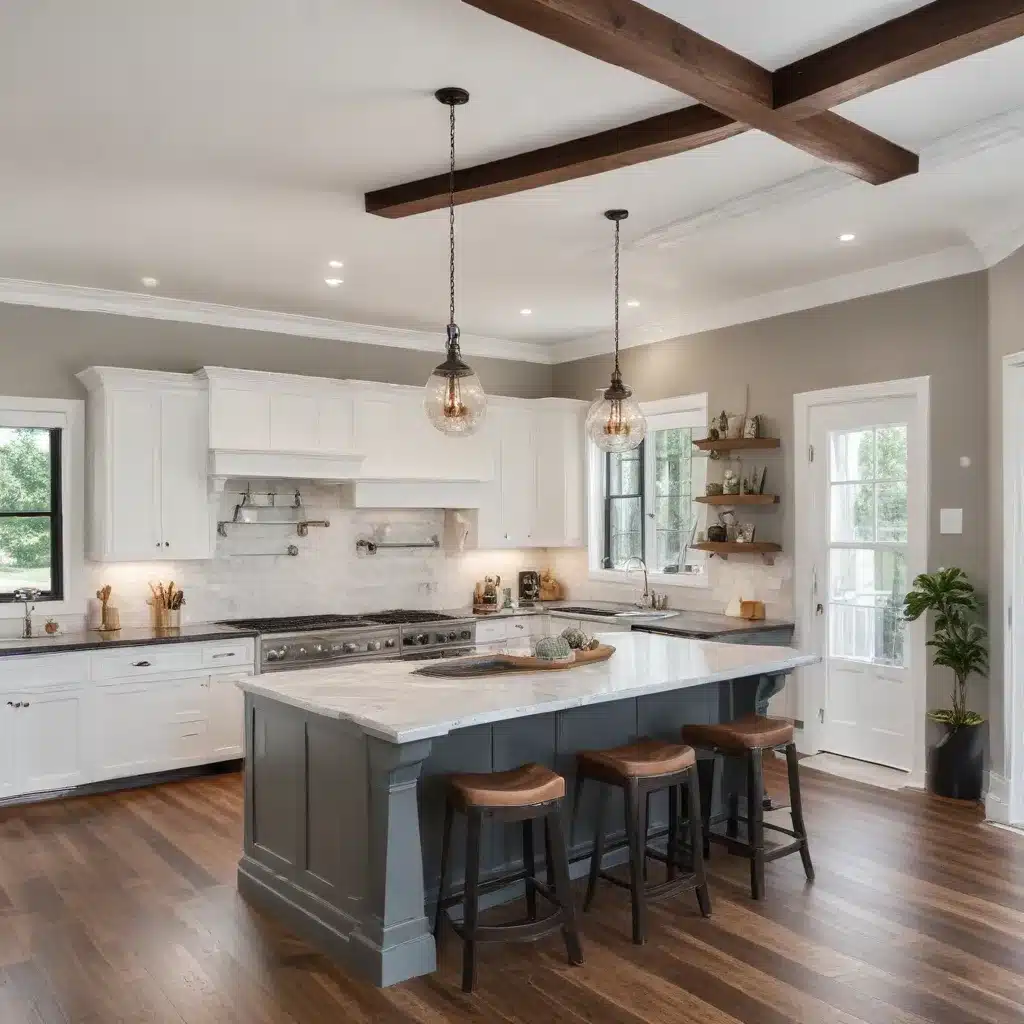
Whole-Home Renovations: Cohesive Design from Top to Bottom
When embarking on a comprehensive home renovation, it’s crucial to adopt an integrated design approach that seamlessly blends structural upgrades with aesthetic enhancements. Whole-home renovations require meticulous planning to ensure a cohesive and functional end result, whether you’re modernizing a dated property or revitalizing a cherished family home.
Defining Whole-Home Renovations
At the heart of a successful whole-home renovation lies the concept of an integrated design. This approach goes beyond addressing individual rooms or isolated pain points. Instead, it considers the home as a holistic entity, where every element – from the layout and flow to the materials and finishes – work in harmony to create a unified living environment.
Whole-home renovations typically encompass both structural and aesthetic transformations. The structural aspects may involve reconfiguring the floor plan, upgrading the electrical and plumbing systems, or improving energy efficiency through enhanced insulation and windows. The aesthetic enhancements, on the other hand, focus on elevating the visual appeal, functionality, and overall ambiance of the living spaces.
Planning for Cohesive Design
When embarking on a whole-home renovation, it’s essential to first establish clear design objectives. Consider factors such as your lifestyle, family needs, personal style preferences, and long-term goals for the property. This will help guide the decision-making process and ensure that each renovation phase seamlessly builds upon the previous one.
Coordinating the renovation phases is crucial for maintaining a cohesive design. Rather than tackling each room or area in isolation, it’s beneficial to develop a comprehensive plan that addresses the interconnectivity of spaces. This might involve strategically timing the kitchen, bathroom, and living room renovations to create a smooth transition and avoid disjointed aesthetics.
Enhancing Functionality and Aesthetics
Rethinking Spatial Organization
At the heart of a successful whole-home renovation lies the optimization of spatial organization. By carefully assessing the flow and layout of your living spaces, you can enhance functionality and create a more intuitive user experience.
Consider how the rooms interconnect and how family members or guests move through the home. Identify opportunities to improve room layouts, remove unnecessary walls, or reconfigure doorways to enhance the overall sense of openness and connectivity. Incorporating strategic storage solutions, such as built-in cabinetry or custom shelving, can also help maximize the utilization of available space.
Elevating Interior Design
Cohesive design extends beyond the structural elements, encompassing the careful selection of color schemes, textures, and materials that bring the space to life. Aim to establish a harmonious color palette that seamlessly transitions from one room to the next, using a range of complementary hues and values.
Incorporate diverse textural elements, such as natural wood, stone, or metal accents, to add depth and visual interest to the spaces. Thoughtfully selected furnishings, artwork, and decorative accessories can further amplify the overall aesthetic, creating a warm and inviting atmosphere throughout the home.
Sustainable Transformation
Energy-Efficient Upgrades
Whole-home renovations present an opportune moment to prioritize energy-efficient upgrades that can significantly reduce your environmental impact and long-term operating costs. Evaluate the existing insulation levels and consider enhancing insulation performance through modern materials like spray foam or blown-in cellulose.
Replacing outdated windows with high-performance, energy-efficient models can also contribute to improved thermal comfort and reduced heating and cooling demands. Explore the integration of eco-friendly systems, such as solar panels, geothermal heat pumps, or smart home technologies, to further optimize the home’s energy efficiency.
Preserving Historic Character
For homeowners seeking to honor the architectural heritage of their property, a whole-home renovation provides an opportunity to blend old and new elements seamlessly. Carefully preserving and restoring original features, such as hardwood floors, exposed beams, or distinctive moldings, can pay homage to the home’s history while complementing modern enhancements.
When introducing new design elements, strive to respect the existing architectural style and integrate them in a way that enhances the overall aesthetic. This might involve selecting materials, finishes, or fixtures that complement the home’s period-specific charm or employing design techniques that echo the original craftsmanship.
Achieving a Personalized Result
Customizing to Lifestyle Needs
Whole-home renovations enable homeowners to tailor the living spaces to their specific lifestyle requirements. Whether it’s accommodating a growing family, incorporating accessibility features, or creating dedicated work-from-home zones, the design process should be centered around your unique needs and preferences.
Carefully consider how the reconfigured spaces will support your daily routines, hobbies, and entertainment needs. Incorporate family-friendly design elements, such as durable flooring, ample storage, and personalized touches that reflect your household’s personality.
Integrating Smart Home Technology
Embracing smart home technology can further enhance the functionality and convenience of your whole-home renovation. From automated lighting and climate control systems to integrated security features and voice-activated assistants, these innovations can significantly improve the overall comfort and efficiency of your living environment.
When planning your renovation, explore opportunities to seamlessly incorporate smart home solutions that elevate the user experience without compromising the cohesive design aesthetic. Carefully select devices and systems that integrate seamlessly and align with your lifestyle and technological preferences.
By taking a comprehensive approach to your whole-home renovation, you can create a living space that not only meets your practical needs but also reflects your personal style and environmental values. From thoughtful spatial planning to sustainable upgrades and customized design elements, the end result will be a harmonious, functional, and visually stunning home that you can enjoy for years to come.
To learn more about whole-home renovations and access a wealth of renovation resources, be sure to visit Reluctant Renovator.



